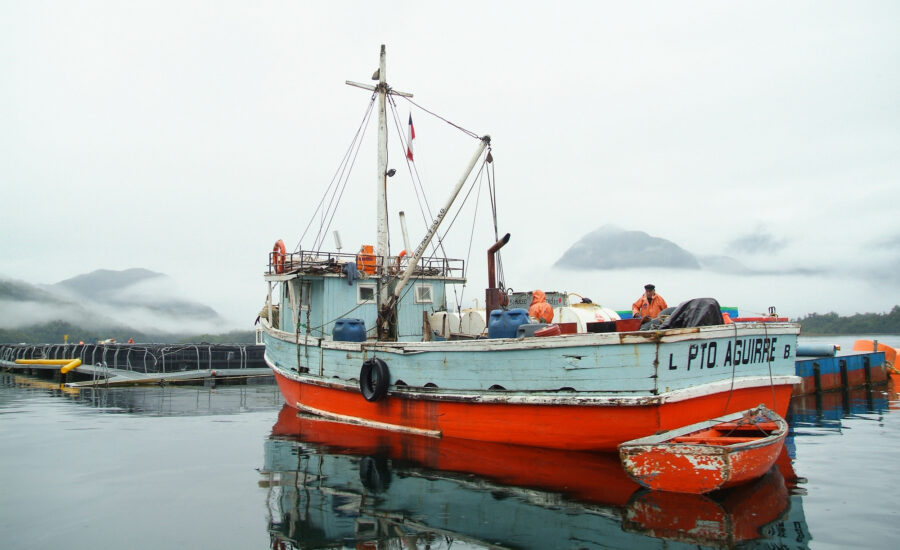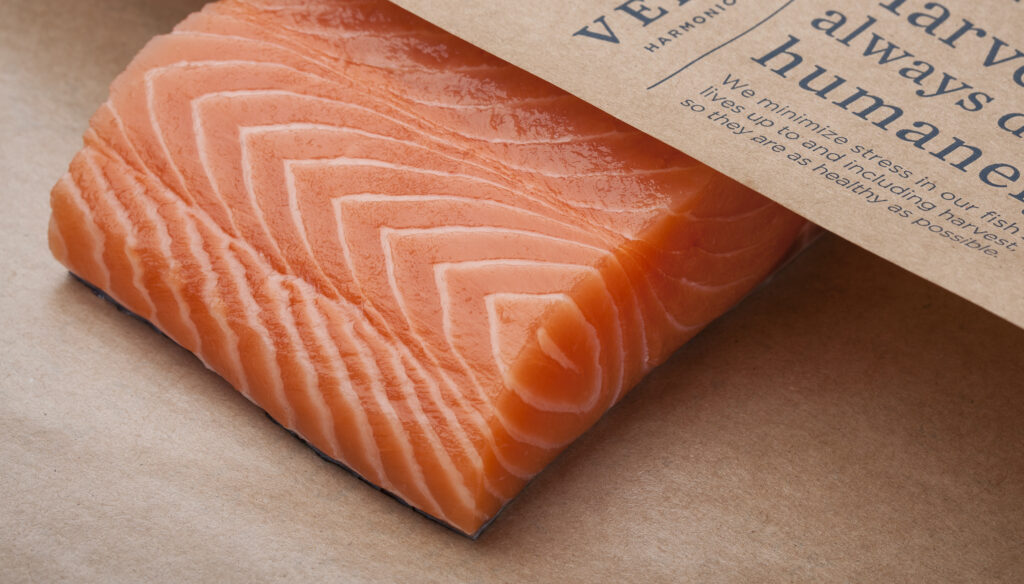The Truth about Heinen’s Farmed Seafood

This post was written by Heinen’s partner, Halle Snavely.
Farmed seafood tends to get a bad rap in the media. If you’ve heard any guidance around what seafood you should be consuming, it’s likely that you should only buy wild-caught. But what if that doesn’t tell the whole story?
It’s true that seafood raised in traditional seafood farms doesn’t have a great reputation for being environmentally-friendly or healthy. But wild-caught seafood comes with its own set of sustainability issues, particularly around over-fishing.
The aquaculture industry has made a number of advancements over the last several years that have changed the landscape for farmed seafood. Given that seafood has a wide-variety of nutritional benefits and demand is at an all-time high, farmed seafood, when raised properly, can be an attractive and sustainable alternative to wild-caught options.
Interested in learning more? Marty Gaul, Heinen’s Director of Seafood, is well-versed in the recent innovations in aquaculture and is excited to share how Heinen’s applies their high-quality standards to their Farmed Seafood Program.
Marty got her introduction to the seafood industry while working at Rini Rego and Giant Eagle. She then started at Heinen’s as a Store Manager and eventually moved to the Seafood Department thanks to her previous experience. She’s been with Heinen’s for the last 20 years and her passion is immediately evident.
“My passion starts with Heinen’s and my love for this company that I grew up in. Heinen’s gave me the autonomy to do what I wanted with seafood, to grow the program and put Heinen’s on the map as a seafood destination.”
What is Farmed Seafood?
Seafood farming consists of raising seafood in a controlled environment for consumption. These environments can include net pens in rivers, lakes or the open ocean, or man-made lakes, pools or tanks on land.
Just like terrestrial animals like cattle, sheep and chickens, there are different factors around how an animal is raised that impact the quality of the final product. Variables such as pen density, feed, disease and pest control, location and waste management all affect the taste and texture.
While farmed seafood was once seen as the inferior option to wild-caught, a number of innovations across the industry are changing the tone. Marty says one example is “low density pens, where these fish are not all piled into a pen on top of each other. There’s plenty of room for the fish to swim and to grow.”
Marty notes that pen density also affects the texture of the fish. If fish don’t have enough space to swim, or a current to swim against, they can’t use their muscles, which results in mushy flesh. But a new crop of forward-thinking producers is changing that.

What Makes Heinen’s Farmed Seafood Different?
Heinen’s applies the same high-quality standards to seafood as any other product that comes into their stores. Marty has sought out the best farmed fish and built relationships with the most innovative fisheries around the world. “It’s got to be the best, otherwise it’s not coming in. If I wouldn’t personally buy it and feed it to my family, I wouldn’t have it in my company. I’m all about quality,” she says.
There are a number of variables that Marty weighs when seeking out seafood partnerships and buying product. One is the feeder fish ratio. “When you look at what these fish are fed, in addition to their normal feed, there’s often feeder fish added such as sardines, mackerel or smelt. Feeder fish could be trimmings from canned sardines and tuna, and instead of that being wasted they’re using that for fish feed. But a high ratio of feeder fish means you’re killing fish to make fish. We strive for a ratio of less than 1 lb. of feeder fish to 1 lb. of farmed salmon.”
Heinen’s only partners with seafood farms that live up to their quality standards. That means not buying seafood with any traceable antibiotics or hormones, and making sure their partners are giving back to the communities where they work.
“We are all about the feeder fish ratio. We are all about sustainability. We are all about the support of the community where these farmed fish are raised. We partner with companies that are doing everything right,” says Marty.
Heinen’s has also implemented a Direct Overnight Seafood Program, where they place an order from Washington state, Alaska or Hawaii (when in season) and it is flown overnight and delivered to the stores the next day. “If I weren’t the one doing it I would say it couldn’t be done. We also place a weekly order in Boston and that fish is trucked overnight and available the next day. You can’t get fresher seafood unless you’re catching it yourself.”
What are the Benefits of Eating Farmed Seafood?
The most important reason for supporting farmed seafood is protecting wild seafood stocks from overfishing. Marty is especially passionate on this issue. “You have to have farmed seafood, as long as it’s done right, to protect the oceans and the stock in the oceans. We’re all about making sure there’s fish for generations to come.”
Marty closely follows reputable organizations like Monterey Bay Aquarium and Marine Stewardship Council to keep up with the latest recommendations and learn about industry trends. She also conducts extensive research on all of her supplier partners and even travels to many of them. “My other comment is always trust in what Heinen’s is doing, because we are doing the right thing. For the animals, for the environment, for the community and for the customers.”


